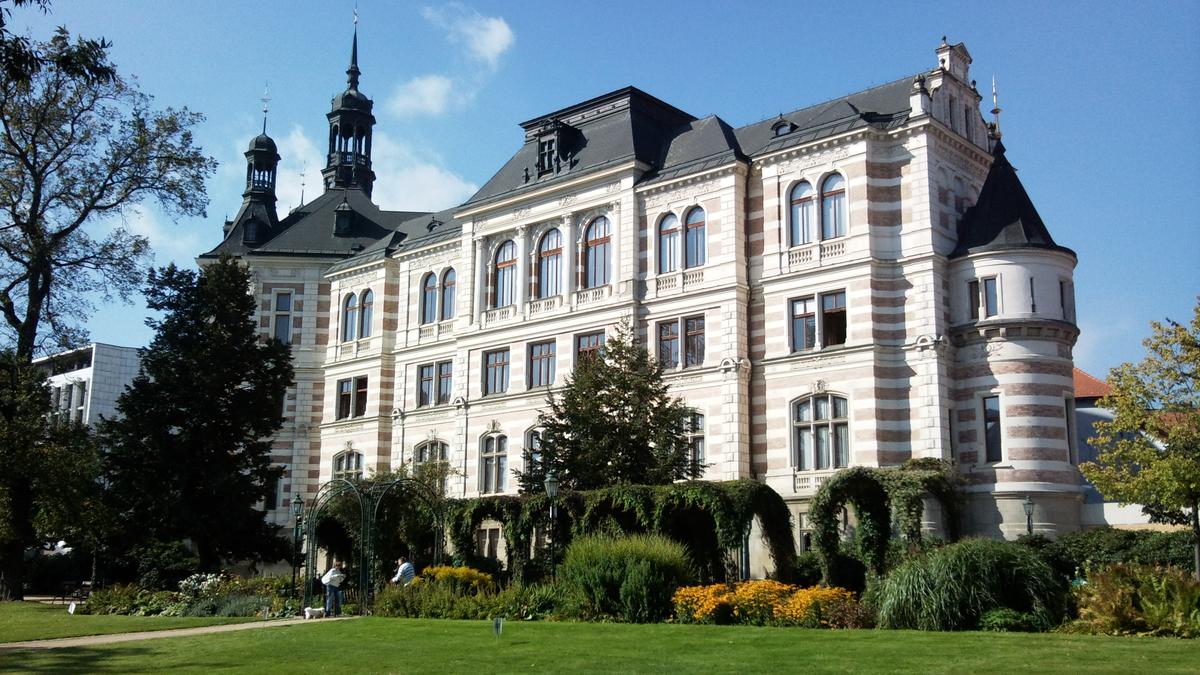#5342. Polychromatic Facade of Neo-Renaissance Palace with Tower Elements
Before us stands a magnificent example of palace architecture from the late 19th century in Neo-Renaissance style. The facade of the building demonstrates the characteristic aspiration for representativeness and refinement typical of this period. The building has a symmetrical composition with a central risalit and two side towers with spires, which gives the silhouette dynamism and vertical aspiration.
The facade is decorated with polychromatic masonry technique, alternating light stone and reddish brick, creating an effect of horizontal stripes. This is a technique often found in Neo-Renaissance and Neo-Baroque architecture, which visually lightens the massiveness of the building. The window openings are decorated with arched completions on the second floor and rectangular ones on the first and third floors, creating rhythmic diversity. The elegant balustrades under the second-floor windows and the crowning cornices deserve special attention.
The right wing of the building ends with a round tower with a dome-shaped roof, which adds asymmetry and visual interest to the overall composition. The architectural solution is complemented by a beautifully designed garden in front of the facade with various plants, arches, and floral compositions, which emphasizes the representative character of the building and creates a harmonious ensemble of architecture and landscape.
